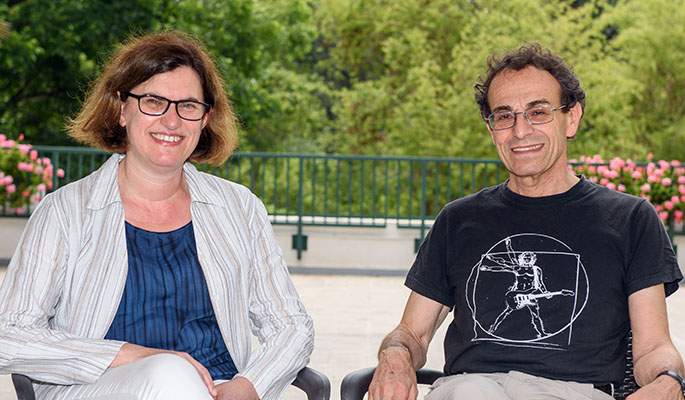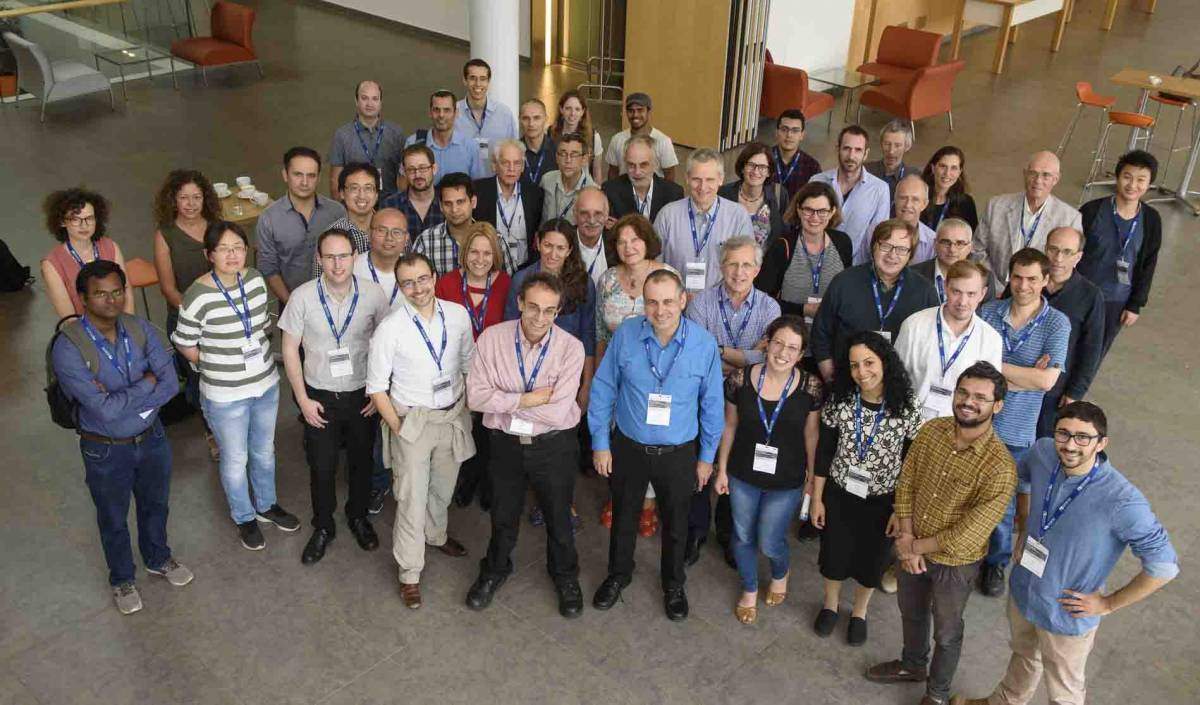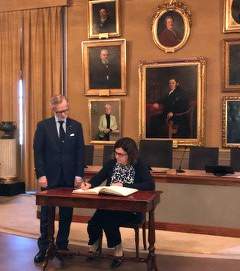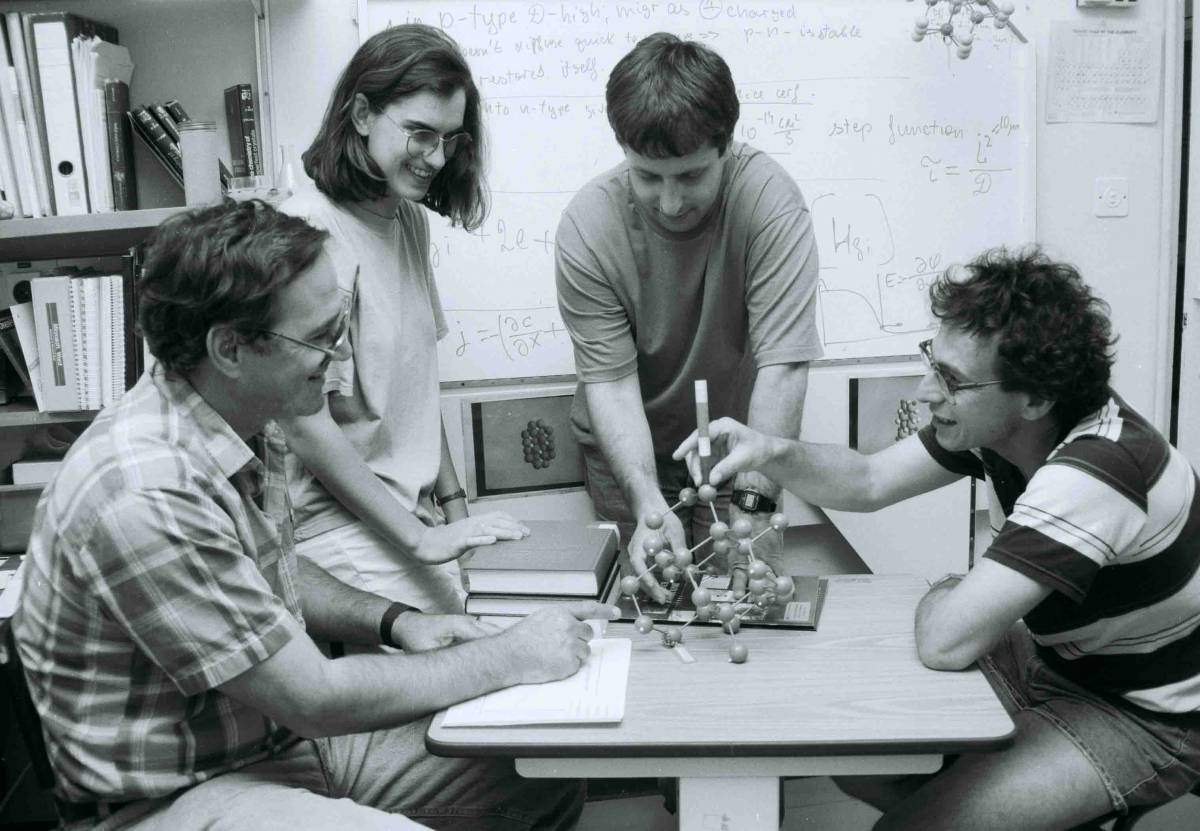Are you a journalist? Please sign up here for our press releases
Subscribe to our monthly newsletter:

Prof. Ellen Moons, a native Belgian and now a physicist at Karlstad University, Sweden, was one of the many former students and colleagues of Prof. David Cahen who came to the recent conference in honor of his 70th birthday. Prof. Moons, who researches optoelectronic molecular materials for such applications as solar energy, conducted her doctoral research in Cahen’s lab in the Weizmann Institute’s Materials and Interfaces Department from 1990 to 1995, and said during the conference that those years were the most significant for her scientific career.
Prof. Cahen was especially touched by Moons’ visit to the Institute. Earlier in the year he had received the news that Prof. Moons, who has become one of the leading physicists in her field, had been elected to the Royal Swedish Academy of Sciences in the “class” for physics (one of the Academy’s ten classes). Prof. Moons is one of five women in the physics class, out of 55 Swedish members in all. She is also the first from Karlstad University to be elected to the Academy (which was founded in 1739, in Stockholm). The Academy, which numbers 460 Swedish and 175 foreign members in total, does not answer to any governmental body; its mission is to to promote the sciences and strengthen their influence in society. By tradition, the Nobel prizes in the sciences are voted upon in a closed-door session and the laureates are announced the same day. The vote, of course, is the final step in a long process of preparation. In the coming year, Prof. Moons will be one of those voters. Cahen: “I remember she was a brilliant student. She had stick-to-itiveness and persistence. She worked with another student who was in my lab and that of Prof. Avi Shanzer, and together they did groundbreaking work in what was a new area in those days – one in which we are still working my lab.”

Moons: “You could say that there is a direct connection between the things I did at the Institute and the research I do today. The subject of my doctorate was modifying the surface properties of semiconductor materials using molecules to improve solar cell performance. Today, my interest is the self-organization of molecules in thin films for applications in organic optoelectronics, such as solar cells and light emitting diodes.
“I first came to the Institute in 1989 as a visiting student, after finishing my MSc studies in Physics in Belgium, thanks to a scholarship given by Israel’s Foreign Ministry and the Flemish Community, and I went directly to Prof. Cahen’s lab. After half a year, he invited me to stay and do my doctorate in his lab. I was surprised; but it was a vital decision and I have never regretted it. This is really the place that ignited my scientific curiosity. I learn how to work together with other scientists, as well as how to discuss science. David was a wonderful mentor for my scientific research. He would introduce us to many other scientists at the Institute, and brainstorming was a regular activity in the lab. The interdisciplinary nature of the Institute and the fact that there are not high fences between the different branches enabled me to receive help from scientists in other fields. If I needed to develop a particular method or a special instrument, I went to the people who specialized in those things and they were always helpful. In those years, I lived on campus, and I worked around the clock. I enjoyed the international, multicultural atmosphere of the campus. There were also some hard movements when I considered giving up. I was here during the first Gulf War, and I witnessed the wave of immigration from the former Soviet Union. We traveled around the country here and there. I remember the weekly coffee klatches in the Perlman building, with all of the departments. It was amazing how many collaborations were born in these meetings.”

From the Institute, Moons continued on postdoctoral research at the Technological University of Delft, the Netherlands, and then at Ecole Polytechnique Fédérale de Lausanne, Switzerland. Afterward, she was accepted to a research associate position in the optoelectronics group in the Cavendish Lab at the University of Cambridge, the group of Sir Richard Friend. Here, she also worked for Cambridge Display Technology, across the road from the Cavendish Lab, on developing polymer-based light-emitting diode (LED) technology.

For the past decade, Moons has been a professor in the Materials Physics Department of Karlstad University. In addition, Moons is a member of a number of scientific committees in Sweden, and she works in close collaboration with several research groups around the world. An even closer collaboration is the one she has with her life partner, who is also a scientist working in the same field as Moons. She, her partner and her 10-year-old daughter live in the Swedish countryside, in Mölnbacka. On top of her scientific activities, she is helping build a university program for Syrian refugee students with educations in the sciences, engineering, psychology and medicine to gain entrance to Swedish professional life. “The challenge to enter the Swedish job market,” she says, “is to bridge the significant cultural gaps. A lot of my inspiration comes from the ways that Israel absorbed scientists from the former Soviet Union, even though, of course, the circumstances are not the same.”